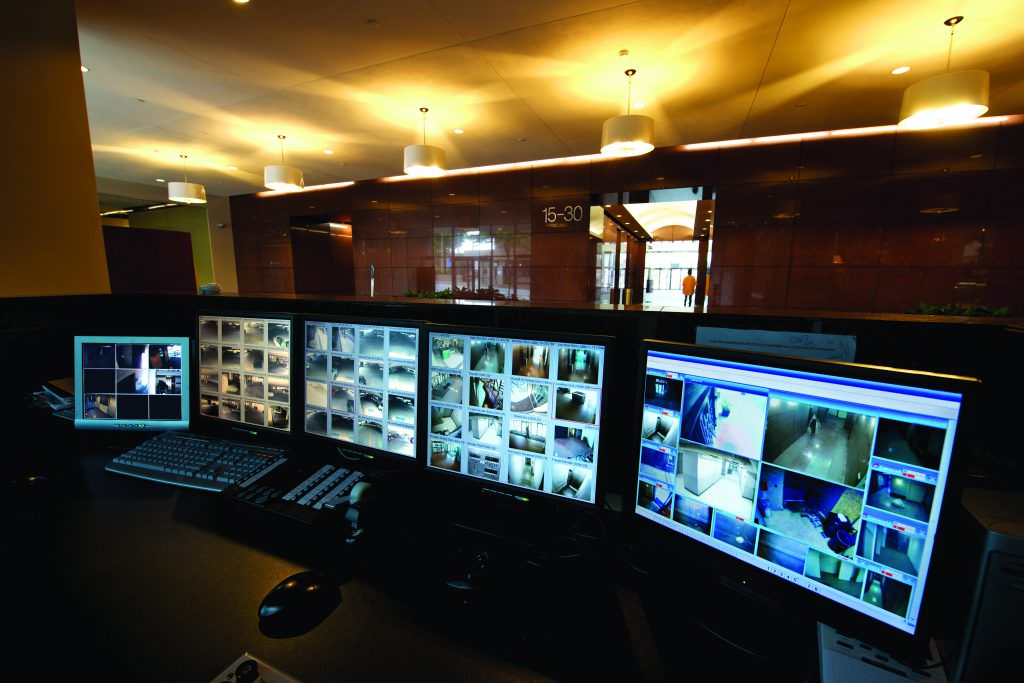Getting on the Path

Shortest Path Bridging can enhance network performance and efficiency

Darren Giacomini, BCDVideo
As the world of surveillance evolves, the introduction of multi-sensor and megapixel cameras presents a dynamic shift in industry accepted standards. For years, we have known the limitations of pan-tilt-zoom (PTZ) cameras, often finding them looking in one direction, only to miss critical events in another. To overcome this limitation, cameras were added to increase coverage.
While innovations in camera technology have addressed the shortcomings in PTZ models, network infrastructure has been placed under unprecedented levels of stress. As the capabilities of cameras increase, along with their coverage areas, so does the critical nature of their operation. In other words, if a single camera is covering one side of a stadium or an entire parking lot, the user cannot afford for it to go offline.
As the days of using proprietary networking hardware come to an end, networking vendors no longer develop their own application-specific integrated circuits (ASICs). Instead, they rely on “merchant silicon” for their networking product offerings. This allows all vendors to use the same hardware, while differentiation is based on the software features of the switch.
For decision-makers, just identifying the shift toward multi-sensor and megapixel cameras is not enough. More than ever, surveillance networks are depended upon to deliver high availability, resulting in “always on” video. Without the proper backend technology, though, an entire video system could go offline.
Shortest Path Bridging replaces this fragile model with a single, elegant protocol executed completely at the hardware level while meeting the demands of real-time surveillance.
Networking House of Cards
Shortest Path Bridging (IEEE 802.1aq) is based on the concept of simplicity – using a single protocol to perform the function of many and executing these functions at the hardware level. Traditional networking creates a house of cards, with multiple overlay protocols used to deliver the required network functionality. Protocols like RSTP, OSPF, IGMP, PIM, and MSDP deliver functionality but only serve to prop each other up. Each one becomes dependent on its underlying protocol for operation. When those underlying protocols break, all dependent protocols cease to function properly. In other words, the house of cards comes tumbling down, and the user is left waiting for the rebuild. During this downtime, critical surveillance operations come to a grinding halt, resulting in video and archiving loss.

Without the proper backend technology, an entire video system could go offline.
Resiliency: You Get What You Pay For
A core switch will power down or need an update, or a primary network path will fail. It is inevitable. The effect this has on surveillance operations depends on the network topology and the technology it supports.
With traditional network technologies, convergence to the redundant path comes at a cost – video frames are dropped while the new path is established. While the network itself can recover in tens of seconds, it often takes the video management system (VMS) much longer. During this time, the user will not be able to record or access any live video.

Shortest Path Bridging, however, supports lightning-fast convergence times. In testing, when the primary core switch was unplugged, more than 8,000 H.264 video feeds converged to the secondary path in less than a second. The same test was conducted with five leading VMS platforms with similar results: no live-view or recording ability was lost. In fact, the VMS platforms were not aware that any failure had occurred.
Unlike traditional networking technologies, Shortest Path Bridging will faultlessly keep both links from intermediate distribution frame (IDF) closets active and load balanced. Traditional networking technologies often shut down one of the links to prevent a network loop; the user is paying for redundant links but only using one at a time.
Leveraging Automation
The networking world is currently going through a major transformation, from white-box and bright-box technology to software-defined networking. With a wide and diverse range of applications driving specific networking needs, applications now communicate with software-defined networking controllers to establish required criteria.
The simplicity of Shortest Path Bridging, and the limited number of unique variables associated with it has opened the door to automated switch deployment and configuration for the entire security industry.
While most software-defined networking is in the data center, this emerging technology is starting to shape the way the surveillance world operates.
For greenfield installations and deployments where surveillance integrators control the IP space, automation has become a reality.

Networking needs are driven by the VMS function and network traffic profiles. Imagine a world in which security professionals can deploy optimized security networks through controlled single-line automation. In other words, an integrator can take 20 switches for a given deployment and execute a single command on each switch.
Within seconds, the switch is configured and optimized to deliver video surveillance traffic in a unicast or multicast environment. What does this mean for the security industry? It means getting the network right the first time.
Automated configurations remove the human element from surveillance network deployments and reduce repeated truck rolls to resolve network-related issues.

Taking Automation to the Next Level
From an integration standpoint, there are obvious benefits to automating network configuration and deployment. Can automation help manage an active surveillance network?
Several leading IP camera manufacturers are currently working on embedding Shortest Path Bridging “auto-attach” features into their cameras. This technology will allow secure communication, authentication, and provisioning for security devices. In other words, if the device supports auto-attach and is authenticated, the network switch port will be automatically programmed to meet the requirements of the security device.
Furthermore, any device that does not support auto-attach, or that is not authenticated, will lack the network programming to function. As a result, this type of automation acts as an enhanced level of security for devices that support the auto-attach feature.
A Better Way to Multicast
For many years, the security industry has been debating the need for multicast. The fundamental issue revolves around scaling resources for live-view. An IP camera is only capable of generating a limited number of high-resolution, high-frame rate streams before exhausting its resources.
In a unicast environment, pulling streams directly from the camera limits the number of viewers before failure occurs.

The proxy model sends a single high-resolution unicast stream to the recorder or archiver, then the proxies stream out for live-view from the server. Given the robust resources allocated to a typical server, this seems like a good solution, but it creates several potential problems.
Performing the proxy function on the server induces latency, increases camera population time, and puts undue stress on the server or archiver. In testing, it has been shown that removing the proxy feature from the server dramatically reduces the saturation of local server resources and allows for a higher max bit rate by the server and its associated roles.
This means that removing the proxy feature will reduce the overall server hardware required to handle the incoming bit rate. With the proxy feature removed, the VMS platform must rely on multicast streaming, directly from the cameras, to deliver the required number of live-views.
In the past, multicast networks were something to be feared and required a very high level of networking knowledge to be implemented properly. Times are changing, though. Automated deployment scripts can deploy multicast flawlessly without any of the complexity of the overlay model. Moreover, multicast over Shortest Path Bridging outperforms expensive core switches at a fraction of the cost.

Shortest Path Bridging for multicast has been deployed throughout the world and supports metro stations, city surveillance, and critical infrastructure. These deployments have ranged from 80 to 12,000 cameras while delivering a highly available multicast network on multiple VMS platforms, all while optimizing performance and efficiency.
Multicast networks for surveillance applications no longer need be feared or avoided. Shortest Path Bridging allows the deployment of multicast without the associated risks of overlay networking. Given the benefits of faster camera population, less latent PTZ control, fast convergence and reduced server hardware costs, the choice is clear. If a VMS supports multicast edge video delivery, it should be embraced. Sometimes, simpler is better.
Darren Giacomini (dgiacomini@bcdvideo.com) is director of networks for BCDVideo (www.bcdvideo.com).
